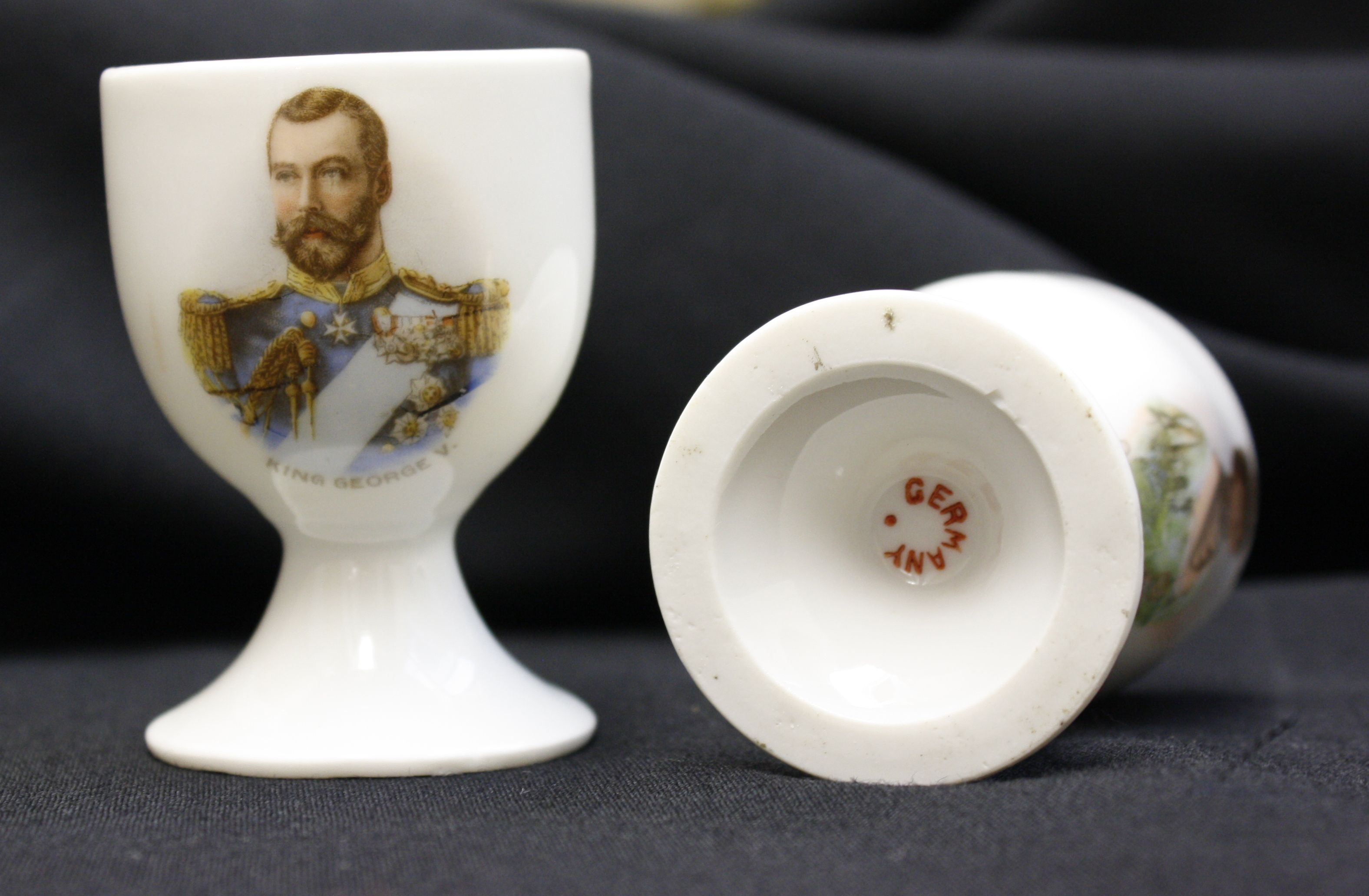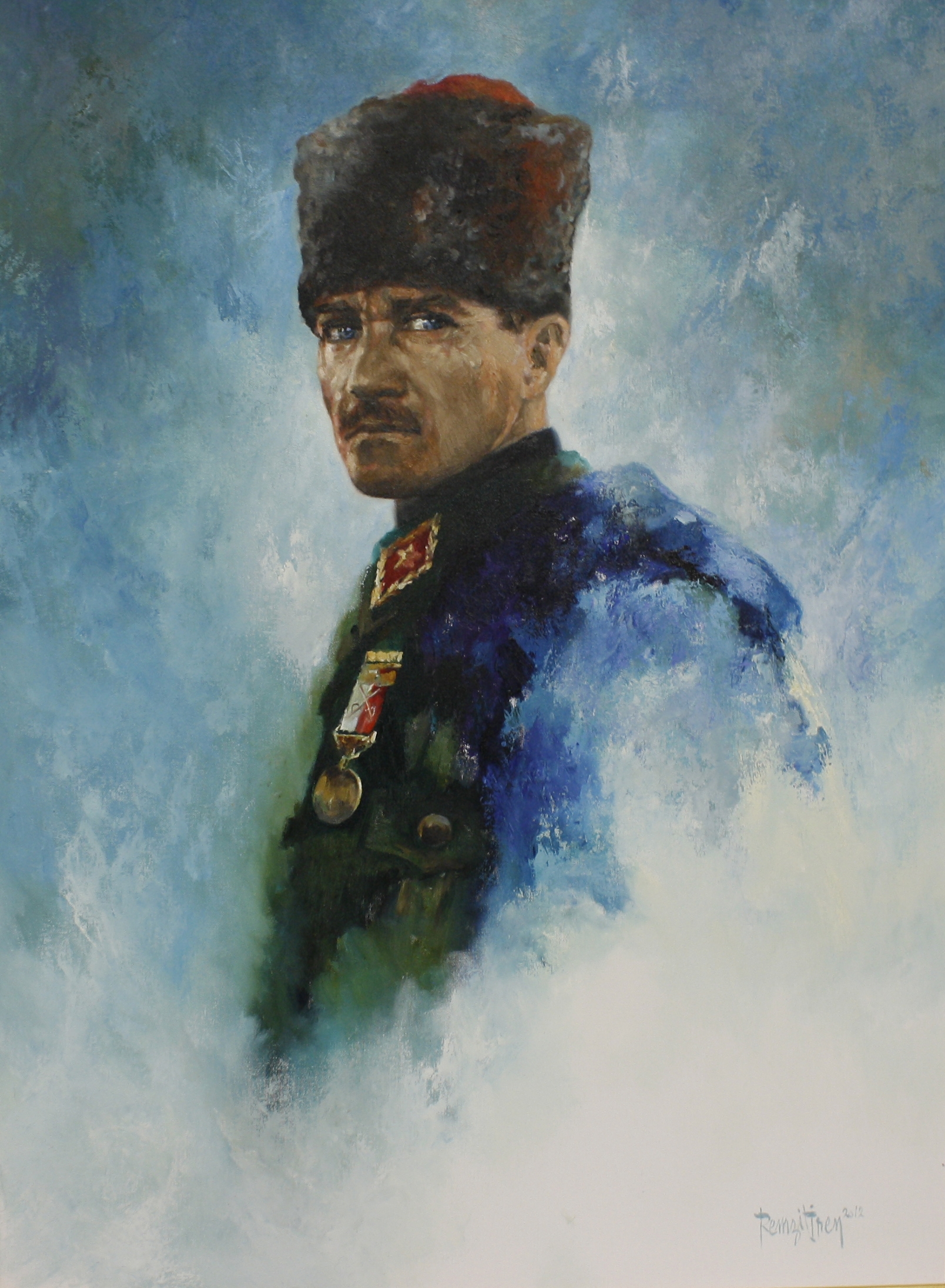The New Zealand Portrait Gallery has opened a new exhibition featuring objects and paintings relating to the First World War.
It will run from the 12th June – 24th August 2014.
New Zealand, as a dominion of the British Empire, was drawn into the conflict with the United Kingdom’s declaration of war in Germany and quickly committed itself fully to the struggle.
New Zealanders fought across the major theatres of combat from the Western Front to the Middle East and the Pacific. Relative to its small population size, the country suffered a high casualty rate.
The exhibition at the Portrait Gallery will feature paintings of politicians and generals from the conflict, alongside objects including a pair of egg cups which bear the portraits of King George V and Queen Mary – who ruled the British Empire at the time.
The base of the cups have inscribed on them the country in which they were produced – Germany.
 The egg cups are one of several objects on display (including a tea towel and ashtray) which bear the King’s image
The egg cups are one of several objects on display (including a tea towel and ashtray) which bear the King’s image
Facing the Front: New Zealand’s Enduring First World War explores the country’s participation in the conflict, with more than 70 paintings and objects on display.
The exhibition does not focus solely on New Zealand. A cartoon of Germany’s Kaiser Wilhelm II and an oil painting of Turkey’s leader Mustafa Kemal Ataturk, which was commissioned by the Turkish Government for the exhibition, are also on display.
 Mustafa Kemal Ataturk, oil on canvas by Remzi Iren, Collection of the Embassy of the Republic of Turkey
Mustafa Kemal Ataturk, oil on canvas by Remzi Iren, Collection of the Embassy of the Republic of Turkey
New Zealand’s wartime Prime Minister, William Masey, is featured in a painting by Briton Augustus John, whilst a portrait of the atom-splitting scientist Lord Rutherford by Dick Frizzell is also on display.
Portraits of New Zealand’s Victoria Cross winners, scientists and businessmen will also feature prominently.
Portrait of The Rt. Hon. W.F. Massey by Augustus John, c1918, oil on canvas, Museum of New Zealand Te Papa Tongarewa Collection
Paintings of the nursing pioneer Hester Maclean and health reformer Ettie Rout, who introduced safe sex practices to New Zealand troopsserving in Egypt, will also be on display, as will portraits of conscientious objectors.
An “outstanding” item on display is a 1500mm by 500mm cross of poppies that Queen Elizabeth II laid at Wellington Cenotaph on the 11th January in 1954.
The exhibition’s curator, Gavin McLean, who is also senior historian at the Ministry for Culture and Heritage, asserted that the consequences of New Zealand’s involvement in the First World War are still felt today.
Mr. McLean said: “As the first of the major World War One art exhibitions, it takes a broad-brush stroke, telling the story of an appalling and inhuman war in one building, rounded out by the inclusion of artists, architects, historians and novelists who have shaped our changing views on the war”.
The exhibition will remain open until the 24th August 2014.
Source: New Zealand Portrait Gallery press release
Images courtesy of the New Zealand Portrait Gallery
Posted by: Daniel Barry, Centenary News
